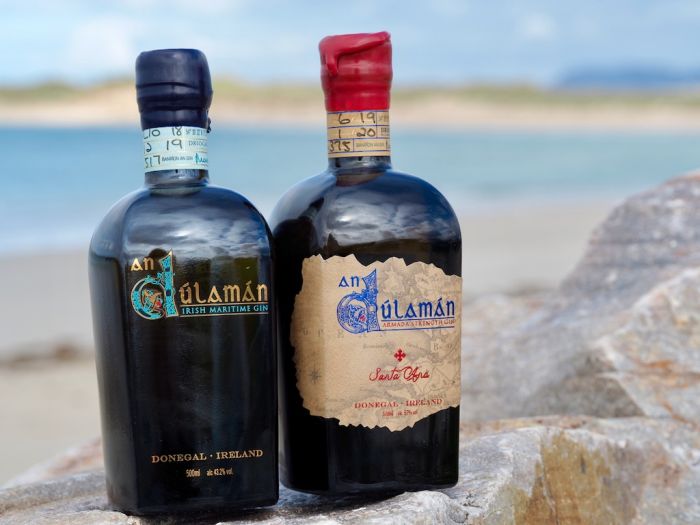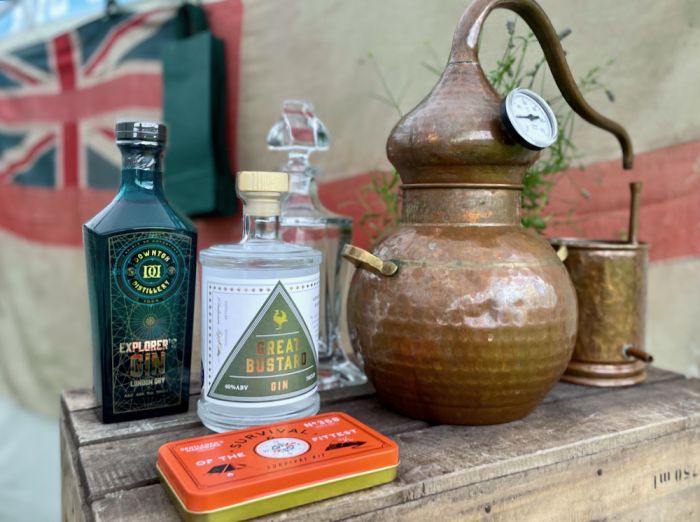
Originally a medical elixir called ‘genever’ created by a 16th-century Dutch scientist, gin has rapidly become one of the world’s most popular drinks.
Low in calories and versatile for cocktails, new ingredients are being constantly added to the mix, from jasmine flowers to seaweed, from persimmon to chocolate.
With World Gin Day celebrated on June 8, here is our ‘chart of creativity’ guide to ingredients used by a selection of European distillers from different countries, many of which offer public tours and/or gin-making workshops.

Monkey 47 - Grains of paradise
Produced in the Black Forest region of Germany at a distillery dubbed The Wild Monkey, Black Forest Distillers, the owners, say it contains 47 different ingredients, thus its name. Among the mix are grains of paradise, almonds, mint, allspice, elderberry, pomelo, orange, blackberry, clove, licorice, sage, acacia flower, ginger, jasmine, rose hip, lemon verbena and camomile. The Bottle Club, one of their distributers described it as having ‘strong floral notes, deep layers of peppery spice and subtle fruit.’ Due to its complexity, it’s perhaps better to drink it with soda water or simply on ice.

Using five locally harvested varieties of seaweed, as well as six other botanicals, Sliabh Liag Distillers created the first maritime gin in Donegal, northwestern Ireland. Then bottled it at 57% and barrel-aged it in Rioja casks. Moira Doherty, co-founder of Sliabh Liag Distillers describes her creation as having a “rose gold hue” with the Spanish wood adding “floral spice and an orange-madeira sweetness, complementing savory brine notes, sweet blackberry, licorice and candied peel.” Symbolizing the 16th century era of the Spanish Armada, the wax-sealed bottles carry an impressive Celtic illustration designed by talented artist, Sean Fitzgerald.

In the sleepy village of Tenure in the heart of the Boyne Valley in Ireland stands Listoke Distillery & Gin School producing a 9-botanical liquor that co-founder, Bronagh Conlon, describes as “robust and well-rounded with a bold taste,” adding, “jasmine combines with pine, cardamom and rowan berries to provide a perfect amount of spice and heat that linger long after the last sip.” A second blend is its Cacao & Raspberry Gin made with raw cacao nibs and raspberries, fruity with a hint of bitterness. An owl on the labels symbolizes the birds nesting nearby.

Located on Northern Ireland’s north-east coast near Donaghadee, The Copeland Distillery opened five years ago following a crowd-funding effort that attracted 390 founders. Operating out of a site vacant for 20 years where a cinema and a bottling company once stood, this 6,500 square-foot distillery is a stone’s throw from a historic harbour. Fruits for its Rhuberry Gin, rhubarb and blackberry, are sourced locally as are botanicals including sea pink maritima from the nearby Copeland Islands. Its Jones 1778 Navy strength gin is aged 120 days in Kentucky bourbon casks and Oloroso sherry casks for 20 more.

Outside Salisbury in southern England stands Downton village featuring the home of 16th-century adventurer, Sir Walter Raleigh. He’d be proud to know his carriage shed became Downton Distillery founded by Hugh Anderson, now moved to Botley Farm, which produces a 15-botanical gin (including Sichuan pepper and timur berries) and named Explorer’s after him. He’d be even prouder to know the distillery has a partnership with a conservation group to raise money to save the endangered bird, the great bustard. Interestingly, four botanicals in this award-winning gin, aptly named Great Bustard, are part of the bird’s foraging diet on nearby Salisbury Plain, namely wild rocket, yarrow, lucerne and red clover.

Named after a legendary 48-year-old Irish cow, reputedly the oldest in the world, this prized small batch ‘milk’ gin by friends, Justin Green and Antony Jackson at Ballyvolane House Spirits Company, infuses whey alcohol from local dairy farmers with sweet orange, coriander and peppery Alexanders, combining them with cumin, clove and cardamom for a spicy, smooth finish. Ballyvolane in Cork also makes a sloe gin called Sloe Bertha with many of the berries picked from the estate itself.

After spending many years in Asia, Irish couple Michelle and Gareth McAllister wanted to merge their love of Europe and the Far East. The result: an impressively designed Xin gin (meaning ‘heart’ or ‘feelings’ in Mandarin), at their distillery in a restored 19th-century mill in the village of Ahascragh in county Galway, western Ireland, featuring aromas of rose, persimmon, citrus and various Oriental botanicals. Keen environmentalists, the couple boast their award-winning Ahascragh Distillery is Ireland’s first zero emissions distillery, with no fossil fuels or gas used in the production process.

Not surprisingly, boutique Irish gins launched four years ago named Runway 28 are owned by a married couple who once worked in the airline industry. A collaboration with Listoke Distillery, Colm O’Dwyer, a retired pilot and his wife, MarieAnn McLoughlin Dwyer, who worked for Aer Lingus and Ryanair. One, Runway 28, is a classic blend of ten botanicals including juniper, angelica root, coriander seeds, cubebs, sumac, caraway seeds, meadowsweet and lemon peel. Another is a ‘Chocolate and Raspberry’ fusion in tribute to ‘Women in Aviation.’ Launched in 2020, the brand is named after an iconic runway in Dublin

In Ireland’s south-eastern city of Waterford, opposite its city hall, stands a pretty Georgian building where the Irish flag flew for the first time ever. Now housing Anchor Spirits, the distillery produces this refreshing gin named after Isacc Thin, a gregarious fellow popular at parties in the 1920s for his potent homemade bathtub variety. Comprising apple, tansy, chamomile, hawthorn and garden mint, it is “inspired by old Irish recipes, stories, people and places that should never have been forgotten.”

In the small town of Ilomantsi in eastern Finland, distillers Asko Ryynänen and Jaakko Sorsahave at Arctic Blue Beverages have handcrafted an aromatic gin with a leading ingredient being bilberries, or wild Arctic blueberries. The Bottle Club, one of the distributors, described it as “dry, warm, with juniper, wild berry and light cardamom notes and a hint of pine.” The berries, which grow locally in this quiet woodland region, fuse with the fragrance of spruces and spices causing the gin to turn a cloudy white when topped with tonic water.









